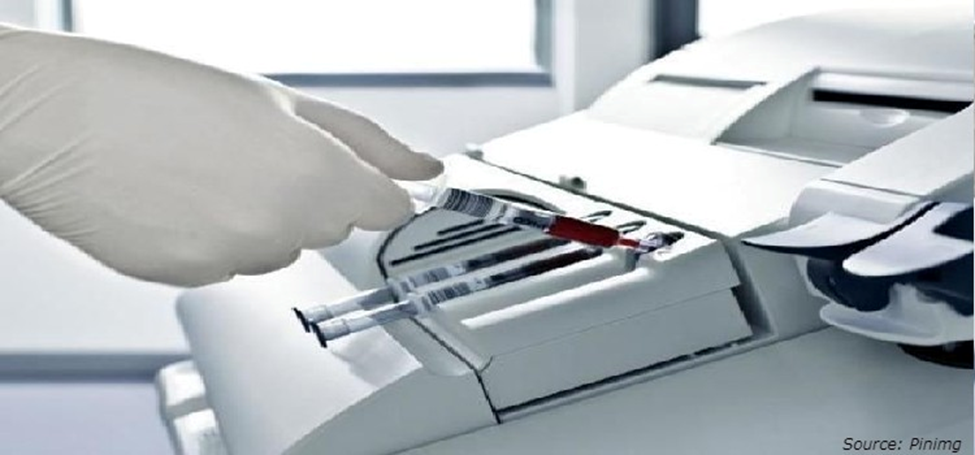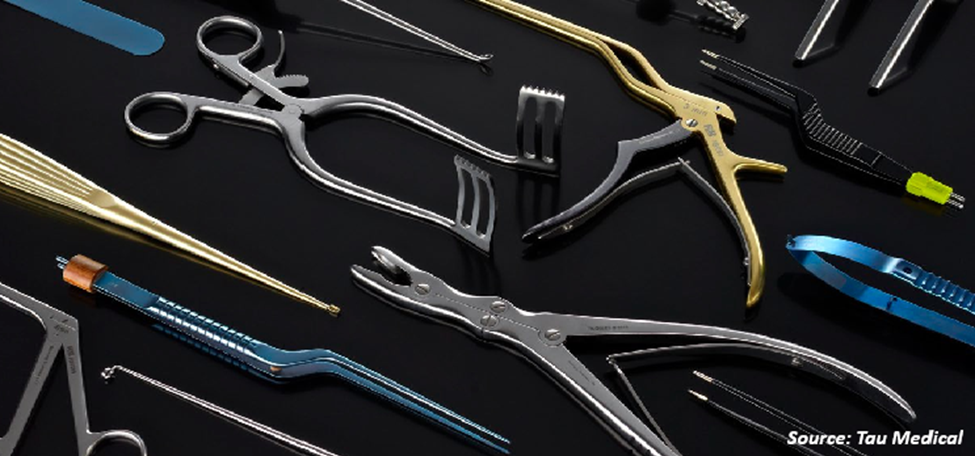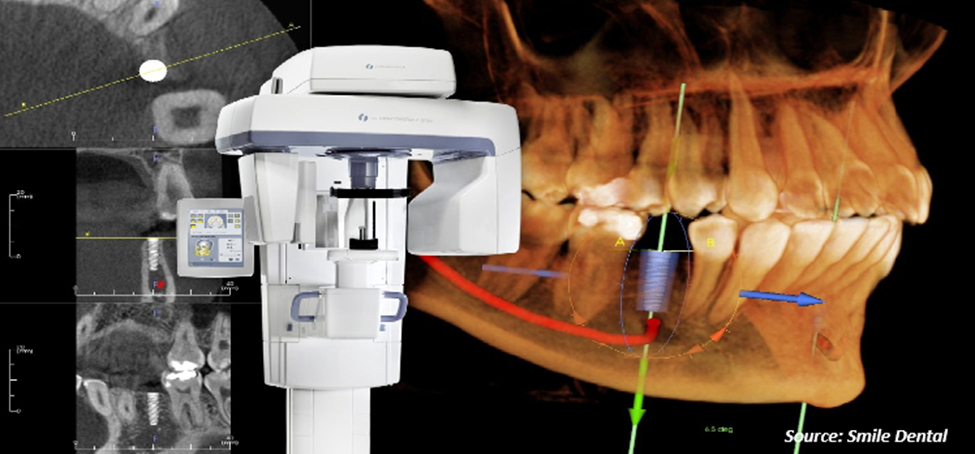
Neuromodulation Market by Technology (Internal Neuromodulation, External Neuromodulation), Biomaterial (Metallic, Polymeric, Ceramic), Application (Epilepsy, Tremor, Incontinence, Depression, Chronic Pain Management, Failed Back Syndrome, Dystonia, Gastroparesis, Parkinson’s Disease, Urine Incontinence, Fecal Incontinence, Other)- Global Opportunity Analysis and Industry Forecast, 2020 – 2030
Industry: Healthcare | Publish Date: 16-Jul-2020 | No of Pages: 487 | No. of Tables: 276 | No. of Figures: 246 | Format: PDF | Report Code : N/A
Market Definition:
The global Neuromodulation Market size was valued at USD 5.90 billion in 2019 and is predicted to reach USD 22.19 billion by 2030, with a CAGR of 12.8% from 2020-2030.
Neuromodulation is controlled electric simulation of the central nervous system or the peripheral nerve, to manage neural activity in the patient’s suffering from neurological disorders such as cerebrovascular diseases, Alzheimer disease, epilepsy, Parkinson's, as well as those caused by bacterial, viral, and fungal infections. The electrodes are directly placed in the brain or peripheral nerves or spinal cord, and pulse generators are implanted under the skin for better results.
Neuromodulation are controlled, reversible, and targeted therapies; as a result, they have minimal to no side-effects on human body as compared to irreversible treatment options used to treat neurological disorders. There are no drug dependencies associated with neuromodulation therapies, hence there is no fear for drug addiction. Furthermore, in some cases, neuromodulation has proved to be more cost-effective than conventional treatment options. These benefits offered by neuromodulation, are projected to propagate the growth of global neuromodulation market, in coming future.
Market Dynamics and Trends:
According to the Public Health Challenges report presented by the World Health Organization in 2019, approximately 6.8 million people die every year due to neurological disorders. 1 billion people are affected by neurological disorder worldwide, of which 50 million people suffer from epilepsy and 24 million from Alzheimer disease.
The increasing prevalence of neurological disorders worldwide, augments the demand for proper healthcare facilities and advanced treatment options to cope with neurological disorders, thereby propelling the growth of global neuromodulation market.
However, factors such as strict policies for product approval, and lack of skilled healthcare professionals are expected to impede the growth of neuromodulation market.
Moreover, factors such as increasing geriatric population prone to neurological disorders, growing awareness regarding safety and efficiency of neuromodulation, as well as increasing investments by public and private sectors in clinical R&D activities for technological advancements, are expected to propagate the growth of global neuromodulation market throughout the forecast period.
Market Segmentations and Scope of the Study:
The global neuromodulation market share has been analyzed based on technology, application, biomaterial, and geography. Based on technology, the neuromodulation market is classified into internal neuromodulation and external neuromodulation. The internal neuromodulation segment is sub segmented into Deep Brain Stimulation, Sacral Nerve Stimulation, Vagus Nerve Stimulation, Spinal Cord Stimulation, and other. The external neuromodulation segment is further divided into Transcutaneous Electrical Nerve Stimulation and Transcranial Magnetic Stimulation. Based on application, the neuromodulation market is fragmented into chronic pain management, failed back syndrome, epilepsy, tremor, urinary and fecal incontinence, depression, dystonia, gastroparesis, Parkinson's disease, Obsessive-Compulsive Disorder, migraine, and other. Based on biomaterial, the neuromodulation market is divided into metallic biomaterials, polymeric biomaterials, and ceramic biomaterials. Geographic breakdown and analysis of each of the previously mentioned segments include regions comprising North America, Europe, Asia-Pacific, and RoW.
Geographical Analysis:
North America is anticipated to account for major market share in the global neuromodulation market throughout the forecast period, owing to well-established healthcare infrastructures and medical laboratories, increased prevalence of neurological disorders leading to higher adoption of the neuromodulation and upsurge in clinical trials aimed at technological advancements.
Asia Pacific is estimated to show tremendous growth in the global neuromodulation market with substantially increasing market share over the forecast period, owing to rise in government initiatives to treat chronic neurological disorders, and increase in the number of product launches.
Competitive Landscape:
The neuromodulation market is highly competitive and consists of various market players. Some of the major market players include Abbott, Medtronic, Boston Scientific Corporation, Cochlear Ltd., Cyberonics Inc., Sonova, Nevro Corp., Advanced Bionics AG, Integer Holdings Corporation, Neuronetics, NeuroPace Inc., Synapse Biomedical Inc., Magstim, NeuroSigma Inc., LivaNova PLC, Soterix Medical Inc., ALEVA NEUROTHERAPEUTICS SA, ReShape Lifesciences Inc., Bioness Inc., DynaMD, BioAlps, MED-EL, The Axonics SNM System, Johnson & Johnson Services Inc., LABORIE, Stimwave LLC, Functional Neuromodulation Ltd., and Biegler GmbH among others.
An upsurge in R&D activities and advancement in product technologies along with increasing number of FDA approvals, stimulates the growth of global neuromodulation market.
For instance, in September 2019, Functional Neuromodulation ltd., one of the major players in the global neuromodulation market, announced that it has initiated a pivot clinical trial to assess Deep Brain Stimulation (DBS) in patients suffering from mild Alzheimer’s Disease. The global Advance-II study, evaluates the safety and efficacy of stimulation for the fornix (DBS-f)—a major inflow and output pathway in the brain’s memory circuit. Research suggests that this is an area affected in the early development of Alzheimer’s disease.
In January 2020, Abbott, one of the major players in the global neuromodulation market, announced that it has received FDA approval for Abbott’s expanded Infinity Deep Brain Stimulation (DBS) system to treat Parkinson’s disease. The Infinity DBS system can target the area of brain called GPi (internal Globus Pallidus) that plays vital role in motor functions, hence assisting in improving the symptoms of Parkinson's disease that are not efficiently controlled by medication. Abbott’s infinity DBS system is the first-ever system that is compatible with iOS platform and Bluetooth wireless technology, hence proving to be a patient-centric innovation technology that can streamline the programming process using Abbott's new Informity with an iPad mini device.
In January 2020, Abbott announced that its BurstDR micrOdosing stimuLation in De-novo patients (BOLD) study reinforce the benefits of XR recharge-free neurostimulation system in people suffering from chronic pain. BOLD study claims that BurstD stimulation waveform reduced the PCS (Pain Catastrophizing Scale Scores), decreasing the negative psychological effects associated with chronic pain at six-month follow up by 62%.
Moreover, in March 2020, Neuronetics Inc., one of the major players in the global neuromodulation market, announced that NeuroStar Advanced Therapy Transcranial Magnetic Stimulation (TMS) system has been granted the breakthrough designation for the treatment of bipolar depression, by the US Food and Drug Administration.
KEY BENEFITS:
-
The neuromodulation market report provides the quantitative analysis of the current market and estimations through 2020-2030 that assists in identifying the prevailing market opportunities to capitalize on.
-
The study comprises a deep dive analysis of the neuromodulation market trend including the current and future trends for depicting the prevalent investment pockets in the market.
-
The information related to key drivers, restraints and opportunities and their impact on the neuromodulation market is provided in the report.
-
The competitive analysis of the market players along with their market share in the global neuromodulation market.
-
The SWOT analysis and Porters Five Forces model is elaborated in the study of neuromodulation market.
-
Value chain analysis in the neuromodulation market study provides a clear picture of the stakeholders’ roles.
KEY MARKET SEGMENTS:
By Technology
-
Internal Neuromodulation
-
Deep Brain Stimulation
-
Sacral Nerve Stimulation
-
Vagus Nerve Stimulation
-
Spinal Cord Stimulation
-
Other
-
-
External Neuromodulation
-
Transcutaneous Electrical Nerve Stimulation
-
Transcranial Magnetic Stimulation
-
By Biomaterial
-
Metallic Biomaterials
-
Polymeric Biomaterials
-
Ceramic Biomaterials
By Application
-
Chronic Pain Management
-
Failed Back syndrome
-
Epilepsy
-
Tremor
-
Urinary and Fecal Incontinence
-
Depression
-
Dystonia
-
Gastroparesis
-
Parkinson's Disease
-
Obsessive-Compulsive Disorder
-
Migraine
-
Other
By Geography
-
North America
-
U.S.
-
Canada
-
Mexico
-
-
Europe
-
UK
-
Italy
-
Germany
-
Spain
-
Netherlands
-
Rest of Europe
-
-
Asia-Pacific
-
China
-
Japan
-
India
-
Australia
-
South Korea
-
Taiwan
-
Vietnam
-
Rest of Asia Pacific
-
-
RoW
-
Latin America
-
Middle East
-
Africa
-
REPORT SCOPE AND SEGMENTATION:
|
Parameters |
Details |
|
Analysis Period |
2019–2030 |
|
Base Year Considered |
2020 |
|
Forecast Period |
2020–2030 |
|
Market Size Estimation |
Billion (USD) |
|
Market Segmentation |
By Technology (Internal Neuromodulation, External Neuromodulation) By Application (Failed Back Syndrome, Chronic Pain, Epilepsy, Essential Tremor, Urinary and Fecal Incontinence, Depression, Dystonia, Gastroparesis, Parkinson's Disease, Migraine) By Biomaterial (Ceramics Biomaterials, Metallic Biomaterials, Polymeric Biomaterials) |
|
Geographical Segmentation |
North America (U.S., Canada, Mexico) Europe (UK, Italy, Germany, Spain, Netherlands, Rest of Europe) Asia-Pacific (China, Japan, India, Australia, South Korea, Taiwan, Vietnam, Rest of Asia Pacific) RoW (Latin America, Middle East, Africa) |
|
Companies Profiled |
Abbott, Medtronic, Boston Scientific Corporation, Cochlear Ltd., Cyberonics Inc., Sonova, Nevro Corp., Advanced Bionics AG, Integer Holdings Corporation, Neuronetics, NeuroPace Inc., Synapse Biomedical Inc., Magstim, NeuroSigma Inc., LivaNova PLC, Soterix Medical Inc., Aleva Neurotherapeutics Sa, ReShape Lifesciences Inc., Bioness Inc., DynaMD, BioAlps, MED-EL, The Axonics SNM System, Johnson & Johnson Services Inc., Laborie, Stimwave LLC, Functional Neuromodulation Ltd., and Biegler GmbH. |
KEY PLAYERS:
-
St. Jude Medical, Inc.
-
LivaNova PLC
-
Medtronic plc
-
Boston Scientific Corporation
-
BioControl Medical
-
Bioness Inc.
-
EnteroMedics Inc.
-
NeuroPace Inc
-
Aleva Neurotherapeutics SA
-
Nevro Corporation




 Speak to Our Analyst
Speak to Our Analyst


































